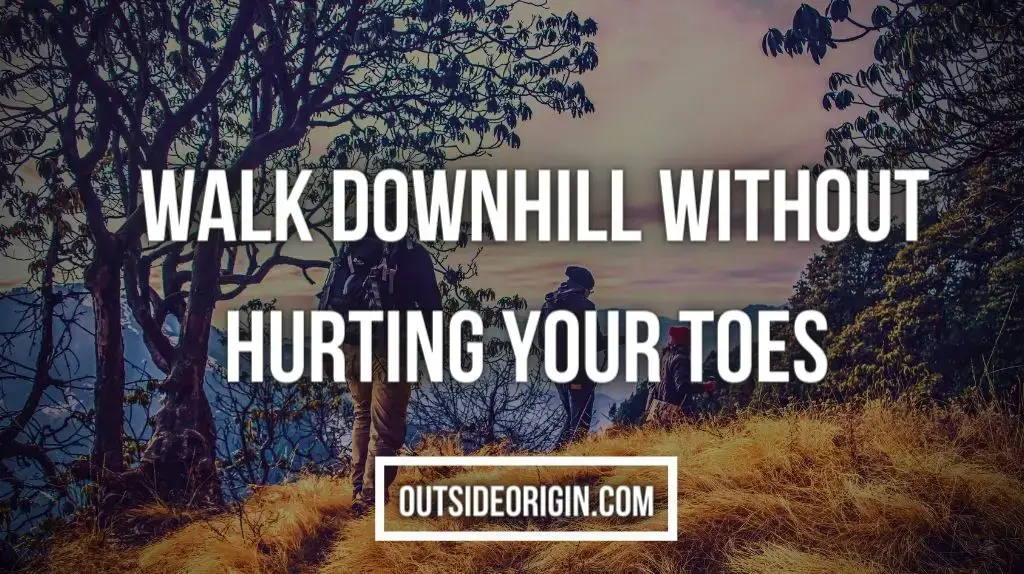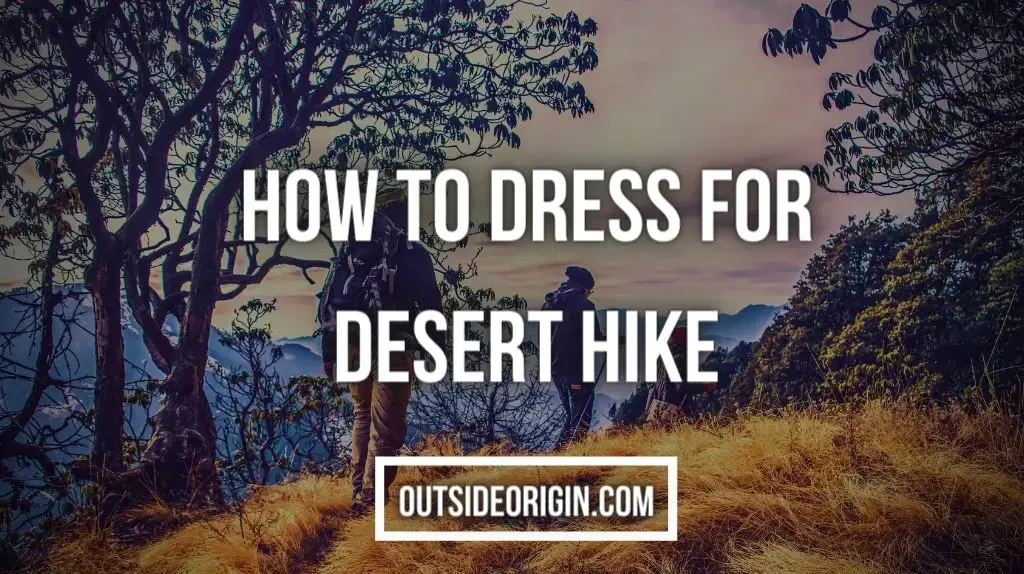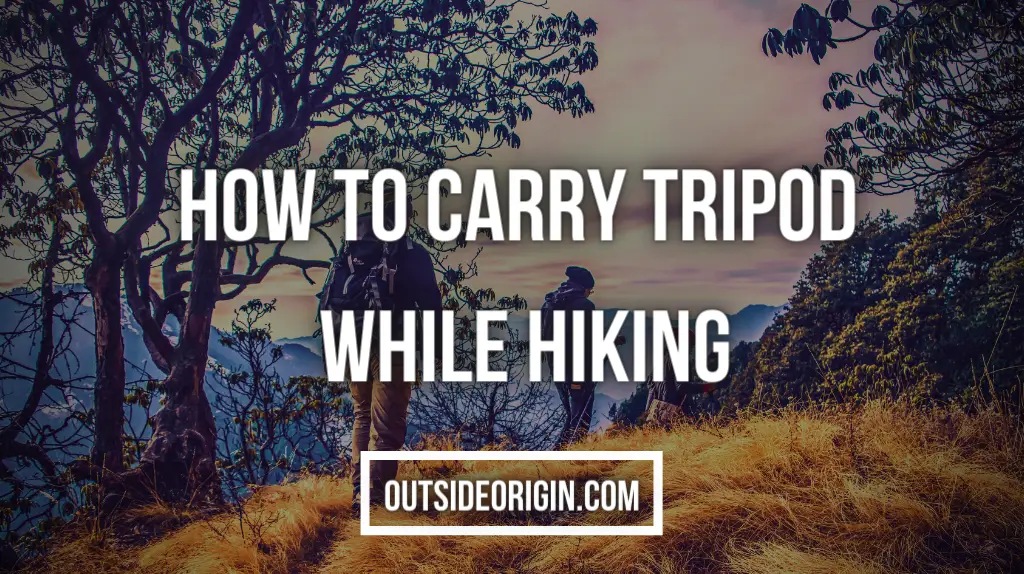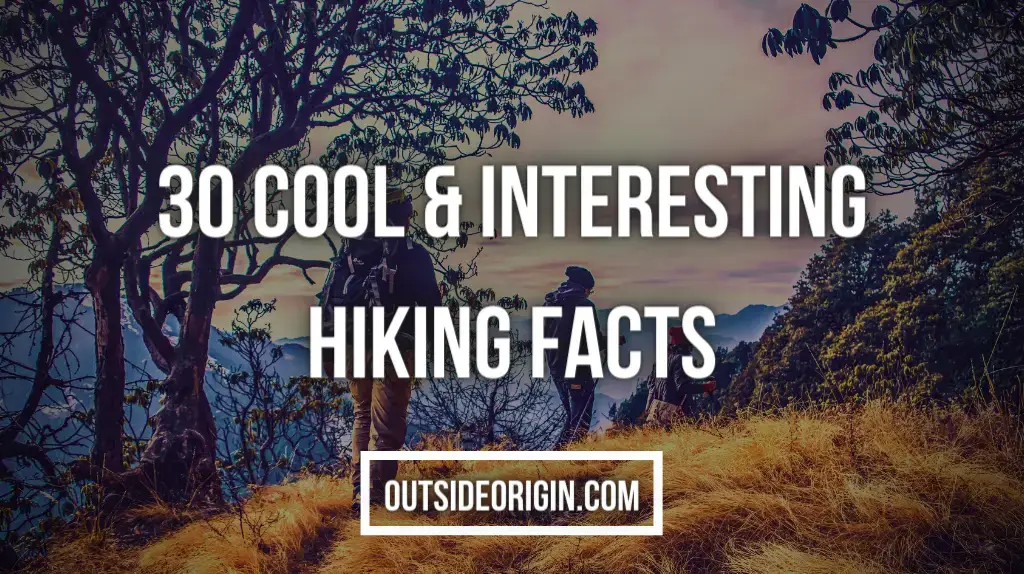Do your toes hurt while walking downhill? How do you walk downhill without hurting your toes?
In this blog post, I will show you how you can walk downhill without hurting your toes!
Lace properly
Although the procedure for lacing your footwear may appear apparent, many experienced hikers choose to lace their boots in an unusual way.
The elaborate lacing is designed to keep the foot from slipping forward within the boot.
Lacing techniques such as a double overhand knot or a surgeon’s knot can assist keep the foot firmly in position, especially when trekking downhill.
Your toes will be safely kept away from the front of your footwear in this manner.
Retying your laces on a frequent basis, or at least every time you stop for a break, is also vital, as laces can loosen with time.
Tightening the laces ensures that your foot is kept firmly in place.
You can read my guide on how to lace your hiking boots here.
Foot powder
Walking with moist or wet feet is known to increase the chance of friction.
Blisters or damage in the toe region can result from friction between and around the toes.
Because changing into a dry pair of socks every 20 minutes is impractical, foot powder is the next best thing.
Foot powder keeps the foot dry, reducing friction and the formation of blisters.
There are several brands you choose from, I personally use Goldbond because it’s specifically designed for this. Some other brands tend to cause clumping up due to moisture.
Walk in a zig-zag way
Your feet are more likely to be forced forwards within your footwear if you walk straight down a slope.
This might not be an issue for a short amount of time, but if you hike downhill for an extended duration of time, it could cause toe or toenail pain or damage.
A toenail that rubs against the front of your hiking boot with each step is in danger of detaching from the nail bed, leaving you without a toenail for an extended period of time.
When feasible, walk downward in a zigzag pattern.
This will cut down on the length of time your foot is looking downwards, as well as relieve some of the tension on your knees.
Insoles
Hiking boots come with an insole, which may appear to provide enough arch support at first.
The footbed that comes with the boots, however, may flatten over time.
This flattening will not only cause discomfort in your feet but will also limit the amount of space available for your foot and raise the chance of friction against your toes.
Your toes will be better protected in the long run if you invest in a more supportive insole.
A high-quality insole that better fits the arch of your foot will provide more comfort and support for your foot for a longer period of time.
I personally use SoulInsole, it is by far the best insole for hiking on the market.
Toenail
You may not have given your toenails much thought in the past, but if you’re serious about hiking, you should examine them on a regular basis.
While you may get away with somewhat longer toenails for a stroll around the park, you’ll need to keep your nails short for hiking. When walking downhill, this is especially true.
Your toes may be closer to the front of your boot as you descend, causing your nails to bash against the inside of your boot with each step.
After a lengthy walk, your toes may expand, and the nails may press on the sensitive skin of a neighbouring toe, causing a hot spot or blister.
Trim your nails before each trip to avoid severe damage to both the nails and the skin around them.
Even if they appear to be fine for another couple of days, even a small amount of excess length can cause harm to both the toe and toenail.
Trim your nails straight across rather than following the curvature of your toe while cutting them.
This can help you avoid getting an ingrown toenail, which is not only unpleasant but also increases your risk of infection.
Check your feet, especially your nails, every time you come to a halt on your journey to ensure you haven’t acquired any hot areas or symptoms of blister formation.
Conclusion
I hope these tips help your toes from hurting while walking downhill.
If you liked this guide, make sure you check out my ultimate guide on how to protect your toes while downhill hiking!
Can You Do Me A Small Favor?
I have put a lot of time & effort into writing this post to provide you with the best info out there.
It’ll help me out if you could consider sharing it on your social media networks. You are also allowed to take any photo you want from my blog as long as you credit and link back!
Appreciate it! ❤️️

Hey, I am the founder of Outside Origin! I love hiking in my spare time and have gone to various different hikes. You can check out our about us section to learn more about what our team and I do over at Outside Origin.




